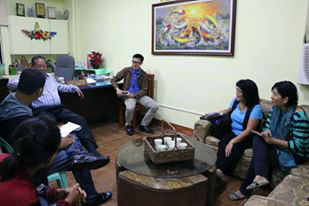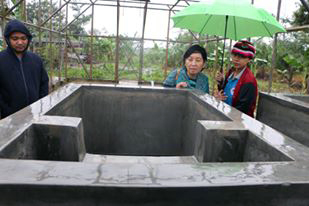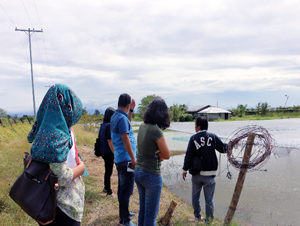 While the Philippines is one of the ten biggest producers of tilapia, the country’s production goes mainly to the domestic market. This is because the national marketable size (143-200g/piece) falls short of the global requirement for live (400-500g/piece) and fillet fish (700-1000g/piece).
While the Philippines is one of the ten biggest producers of tilapia, the country’s production goes mainly to the domestic market. This is because the national marketable size (143-200g/piece) falls short of the global requirement for live (400-500g/piece) and fillet fish (700-1000g/piece).
Prompted by this concern, the Philippine Council for Agriculture, Aquatic and Natural Resources Research and Development of the Department of Science and Technology (DOST-PCAARRD) crafted the Industry Strategic S&T Program (ISP) for Tilapia.
The ISP for tilapia aims to introduce technological innovations to boost the production capacity of tilapia production system and enhance product competitiveness.
Under the said program, PCAARRD and its partners are improving tilapia genetics and developing quality broodstock through strategic research.  In Northern Luzon, PCAARRD and the Department of Agriculture-Bureau of Agricultural Research (DA-BAR) support the projects, Pilot Scale Application of Aquashade to Reduce Water Temperature and Enhance Seed Production in Hatchery Systems for Tilapia and On-Farm Trials of Phytoandrogen for Sex Reversion of Tilapia under the programs on Increasing Productivity of Tilapia Farms Using Product and Technology Innovation and Developing Tilapia Diet and Alternative Technology on Tilapia Production, respectively.
In Northern Luzon, PCAARRD and the Department of Agriculture-Bureau of Agricultural Research (DA-BAR) support the projects, Pilot Scale Application of Aquashade to Reduce Water Temperature and Enhance Seed Production in Hatchery Systems for Tilapia and On-Farm Trials of Phytoandrogen for Sex Reversion of Tilapia under the programs on Increasing Productivity of Tilapia Farms Using Product and Technology Innovation and Developing Tilapia Diet and Alternative Technology on Tilapia Production, respectively.
Guided by the importance of monitoring as a critical research and development instrument, Drs. Loureeda C. Darvin, Norida P. Samson, and Caren M. Dalma, technical staff of the Inland Aquatic Resources Research Division (IARRD) of PCAARRD monitored the projects in Isabela State University (ISU) in Echague, Isabela; and Central Luzon State University-Freshwater Aquaculture Center in Muñoz, Nueva Ecija.
Dr. William C. Medrano, ISU Vice President for R&D, Extension Training and concurrently Cagayan Valley Agriculture, Aquatic and Natural Resources Research and Development (CVAARRD) Director disclosed the ISU programs and projects that address fishkill and postharvest losses in Isabela, among others.
On the project, Pilot Scale Application of Aquashade to Reduce Water Temperature and Enhance Seed Production in Hatchery Systems for Tilapia, pilot test sites have been identified tilapia fingerlings and other inputs are being acquired, said Dr. Francis N. Baleta, ISU Professor and Study Leader of the said project.
The DA-BAR-ISU funded Aquaponics project on Developing Tilapia Diet and Alternative Technology on Tilapia Production included a visit at the College of Fisheries research facilities at ISU-Roxas Campus.
 Dr. Isagani P. Angeles, Project Leader, said that a new building for multi-freshwater fishes hatchery is under construction at Roxas ISU campus. “ISU’s Roxas, Echague, and Palanan campuses strengthen the competencies of students on aquaculture, capture and postharvest fisheries, aquatic resources, and ecology,” Angeles added.
Dr. Isagani P. Angeles, Project Leader, said that a new building for multi-freshwater fishes hatchery is under construction at Roxas ISU campus. “ISU’s Roxas, Echague, and Palanan campuses strengthen the competencies of students on aquaculture, capture and postharvest fisheries, aquatic resources, and ecology,” Angeles added.
Dr. Emmanuel M. Vera Cruz of the Central Luzon State University-Freshwater Aquaculture Center (FAC-CLSU) leads the project, Pilot Scale Application of Aquashade to Reduce Water Temperature and Enhance Seed Production in Hatchery Systems for Tilapia. Dr. Vera said that the technology is being pilot tested both in the station and in the farm in Nueva Ecija.
The same trial is being done for the project On-Farm Trials of Phytoandrogen for Sex Reversion of Tilapia according to its project leader, Dr. Ravelina R. Velasco, also from FAC-CLSU.
The IARRD experts explained that male tilapia grows faster and much bigger than the females. The males weigh from 350-500 grams per piece in four months but the females reach up to 150-250 grams per piece within the same culture period. Because the female tilapia reproduces fast, the over population in the pond retards their growth and causes death of many. This is where the technology of sex reversal becomes important.
